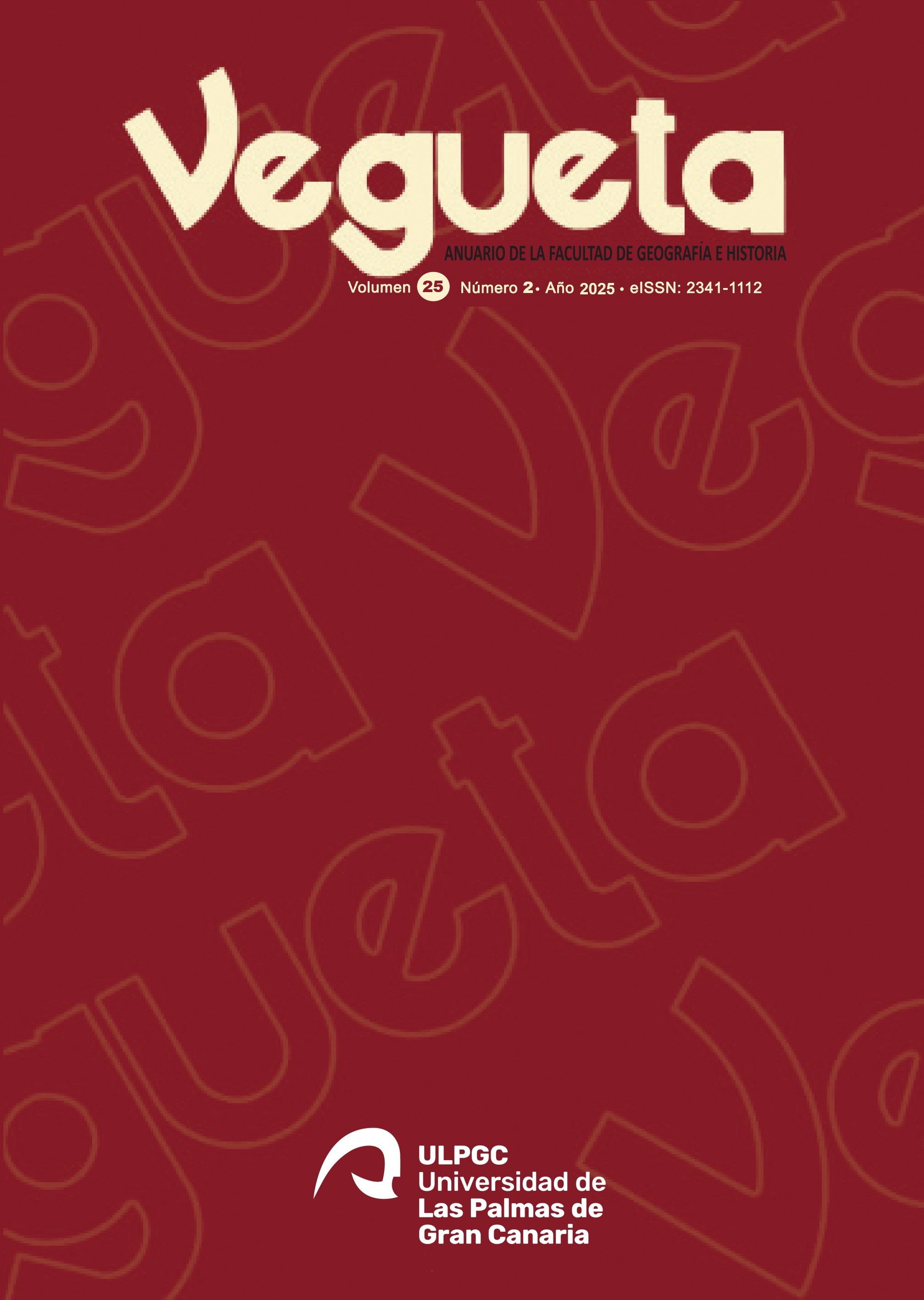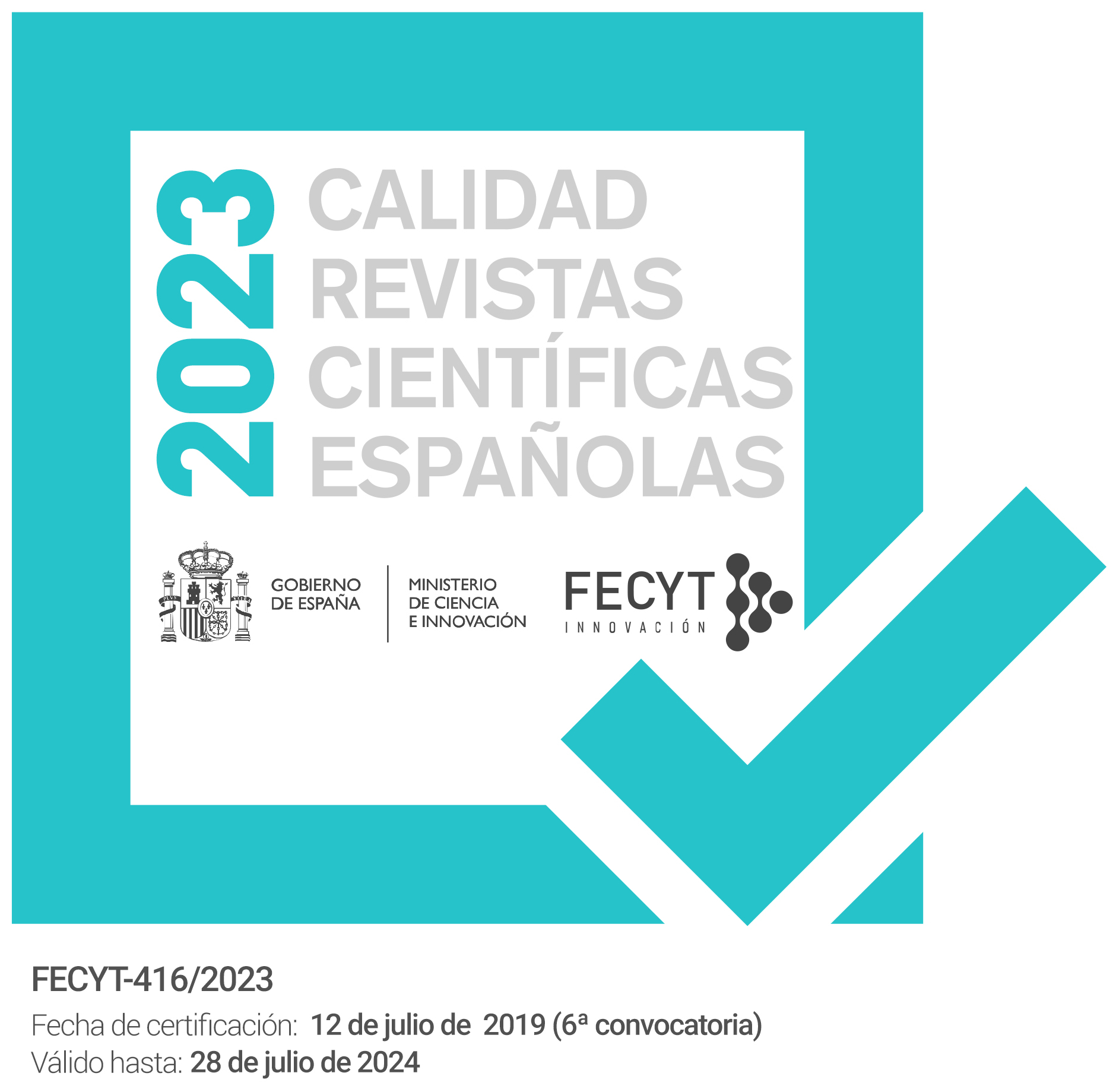Living with chronic pain in Fronto’s Letters
DOI:
https://doi.org/10.51349/veg.2025.2.16Keywords:
Imperial Rome, Chronic Pain, Disability StudiesAbstract
This paper deals with the experience of ageing with chronic pain in imperial Rome through the letters of Fronto (2nd century CE). Letters are first-person narratives of a man with a chronic and painful condition, probably gout, as well as a privileged source to approach living with pain in Antiquity. This work analyzes the symptoms and the physical and emotional consequences of Fronto’s pain, his relationship with time and space, the medical and assistive technologies he recurred to, and how gout conditioned his individual and social life.
Downloads
References
ALONSO ALONSO, M. Á. (2018): Los médicos en las inscripciones latinas de Italia (siglos II a.C. – III d.C.). Aspectos sociales y profesionales, Ediciones Universidad de Cantabria, Santander.
ARMISEN-MARCHETTI, M. (2010): Le doleur physique dans les Lettres à Lucilius de Sénèque, en P. LAURENCE y F. GUILLAUMONT (eds.), Les écritures de la douleur dan l’épistolaire de l’Antiquité à jours, Presses universitaires François-Rabelais, París: 91-112.
BOURKE, J. (2014): The Story of Pain: from prayer to painkillers, Oxford University Press, Oxford.
BOWERSOCK, G. W. (1969): Greek Sophists in the Roman Empire, Oxford University Press, Oxford.
BYL, S. (1988): Rheumatism and Gout in the Corpus Hippocraticum, L’antiquité Classique, 57: 89-102.
CAIRNS, D. (ed.) (2019): A Cultural History of Emotions in Antiquity, Bloomsbury, Londres.
CASAMAYOR MANCISIDOR, S. (2022): Libanio y la autobiografía del dolor crónico, Antigüedad y cristianismo, 39: 107-119.
CHALÈS, G.; COIFFIER, G. y ALBERT, J. D. (2017): Gota, EMC – Aparato Locomotor, 50(4): 1-21.
CHAMPLIN, E. (1974): The Chronology of Fronto, The Journal of Roman Studies, 64: 136-159.
CID LÓPEZ, R. M.; DOMÍNGUEZ ARRANZ, A. y MARINA SÁEZ, R. M. (eds.) (2021): Madres y familias en la Antigüedad. Patrones femeninos en la transmisión de emociones y de patrimonio, Ediciones Trea, Gijón.
DAVENPORT, C. y MANLEY, F. (eds.) (2014): Fronto: Selected Letters, Bloomsbury, Londres.
DE HOZ GARCÍA-BELLIDO, M. P. (2014): Lucian’s Podagra, Asclepius and Galen. The popularization of medicine in the second century AD, en L. A. GUICHARD; J. L. GARCÍA ALONSO y M. P. DE HOZ GARCÍA-BELLIDO (eds.), The Alexandrian Tradition. Interactions between Science, Religion, and Literature, Peter Lang, Berna: 175-210.
DE LUCE, J. (1989): Ovid as an Idiographic Study of Creativity and Old Age, en T. FALKNER y J. DE LUCE (eds.), Old Age in Greek and Latin Literature, State University of New York, Nueva York: 195-216.
DEL MÓNACO, R. (2015): La experiencia de padecer migraña: el análisis de narrativas como estrategia metodológica para el estudio de este dolor crónico, Revista Latinoamericana de Metodología de la Investigación Social, 9: 22-35.
DOWNIE, J. (2017): The Experience and Description of Pain in Aelius Aristides’ Hieroi Logoi, en J. Z. WEE (ed.), The Comparable Body. Analogy and Metaphor in Ancient Mesopotamian, Egyptian, and Greco-Roman Medicine, Brill, Leiden-Boston: 247-274.
DRAYCOTT, J. (2019): Roman Domestic Medical Practice in Central Italy. From the Middle Republic to the Early Empire, Routledge, Nueva York.
ELLIOTT, S. (2020): The Rustle of Paul. Autobiographical Narratives in Romans, Corinthians, and Phillippians, T&T Clark, Londres.
FERNÁNDEZ, C. N. (2021): Las emociones en la Antigüedad: indignación y envidia en Aristóteles y Aristófanes, Circe de clásicos y modernos, 25: 75-98.
FLEMMING, R. (2001): Making the Roman Women: Gender, Nature, and Authority from Celsus to Galen. Oxford University Press, Oxford.
FLEURY, P. (2012): Marcus Aurelius’ Letters, en M. VAN ACKEREN (ed.), A Companion to Marcus Aurelius, Blackwell, Oxford: 62.76.
FRANK, A. W. (1995): The Wounded Storyteller. Body, Illness, and Ethics, The University of Chicago Press, Chicago.
GILMORE, L. (2021): Agency without mastery: Chronic pain and posthuman life writing, Biography, 35: 83-98.
GONZÁLEZ-POLLEDO, E. y TARR, J. (2016): The thing about pain: The remaking of illness narratives in chronic pain expressions on social media, New media & society, 18: 1455-1472.
GUIOTE GONZÁLEZ, A. (2012): Arteterapia y Fibromialgia: Las Resistencias del Dolor, Arteterapia: Papeles de arteterapia y educación artística para la inclusion social, 7: 261-278.
HAINES, C. R. (1919): The Correspondence of Marcus Cornelius Fronto, Loeb, Londres-Nueva York.
HONKASALO, M. L. (1998): Space and Embodied Experience: Rethinking the Body in Pain, Body & Society, 4: 35-57.
JURECIC, A. (2012): Illness as Narrative, University of Pittsburgh Press, Pittsburgh.
KAFER, A. (2013): Feminist, Queer, Crip, Indiana University Press, Bloomington.
KING, D. (2018): Experiencing Pain in Imperial Greek Culture, Oxford University Press, Oxford.
LEÓN FERNÁNDEZ, M. (2007): La poesíaterapia: enfrentando y manejando el dolor, ABRA, 36: 169-182.
MARTÍNEZ SAURA, F. (1994): Frontón: la enfermedad en el siglo II, Gerión, 12: 103-111.
MATTERM, S. P. (1999): Physicians and the Roman Imperial Aristocracy: The Patronage of Therapeutics, Bulletin of the History of Medicine, 73: 1-18.
MÉNDEZ DE LA BRENA, D. E. (2022): Estados mórbidos. Desgaste corporal en la vida contemporánea, Kaotika Libros, Madrid.
MOMMSEN, T. (1874): Die chronologie der Briefe Frontonis, Hermes, 8: 198-216.
PALACIOS MARTÍN, Á. (1992): Frontón. Epistolario, Gredos, Madrid.
PETRIDOU, G. (2018a): Laughing Matters: Chronic Pain and Bodily Fragmentation in Lucian’s Podagra, Illinois Classical Studies, 43: 488-506.
PETRIDOU, G. (2018b): The Curious Case of Aelius Aristides. The Author as Sufferer and Illness as ‘Individualizing Motif’, en E. M. BECKER y J. RÜPKE, Autoren in religiösen literarischen Texten der späthellenistischen und der frühkaiserzeintlichen Welt, Mohr Siebeck, Tubinga: 199-220.
PETRIDOU, G. (2021): ‘There is pain -so utter-’. Narrating chronic pain and disability in antiquity and modernity, en E. ADAMS (ed.), Disability Studies and the Classical Body. The Forgotten Other, Routledge, Londres: 66-87.
PRICE, M. (2015): The Bodymind Problem and the Possibilities of Pain, Hypatia, 30: 268-284.
RHEE, H. (2022): Illness, Pain, and Health Care in Early Christianity. Wm. B. Eerdmans Publishing Co., Grand Rapids.
RICHLIN, A. (2011): Parallel lives: Domitia Lucilla and Cratia, Fronto and Marcus, EuGeStA, 1: 163-203.
SAMAMA, E. (2003): Les médicins dans le monde grec: sources épigraphiques sur la naissance d’un corps médical. Libraire Droz, Ginebra.
SAMELLAS, A. (2015): Public Aspects of Pain in Late Antiquity: The Testimony of Chrysostom and the Cappadocians in their Graeco-Roman Context, ZAC, 19: 260-296.
SCARBOROUGH, J. (1969): Roman Medicine, Thames and Hudson, Londres.
SCHOTT, G. D. (2004): Communicating the experience of pain: the role of analogy, Pain, 108: 209-212.
SHEPPARD, E. (2020): Chronic Pain as Emotion, Journal of Literary & Cultural Disabilities, 14: 76-81.
TAOKA, Y. (2013): Liminal Women in Fronto’s Letters, The Classical Journal, 108: 419-445.
TRAWALTER, S.; HOFFMAN, K. M. y WAYTZ, A. (2012): Racial Bias Perceptions of Other’s Pain, PLOS ONE, 7: 1-8.
VAN DEN HOUT, M. P. J. (1999): A Commentary on the Letters of M. Cornelius Fronto, Brill, Leiden.
WENDELL, S. (1996): The Rejected Body. Feminist Philosophical Reflections on Disability, Routledge, Londres.
WHITEHORNE, J. E. G. (1977): Was Marcus Aurelius a Hypochondriac?, Latomus, 36: 413-421.
WILSON, N. (2013): The Semantics of Pain in Greco-Roman Antiquity, Journal of the History of the Neurosciences: Basic and Clinical Perspectives, 22: 129-143.
ZURHAKE, L. (2020): Chronic Pain and Illness. Pain and Meaning: Interpreting Chronic Pain and Illness in Greco-Roman Antiquity, en C. LAES (ed.), A Cultural History of Disability in Antiquity, Bloomsbury, Londres: 57-66.
Downloads
Published
Issue
Section
License
Copyright (c) 2025 Sara Casamayor Mancisidor

This work is licensed under a Creative Commons Attribution-NonCommercial-NoDerivatives 4.0 International License.
The articles are open access distributed under the terms of the Creative Commons Attribution-NonCommercial-NoDerivatives (CC BY-NC-ND) Spain 4.0 license. Authors who publish in this journal agree with the following terms:
a) Authors retain the copyright and guarantee the journal the right to be the first publication of the work as well as licensed under a Creative Commons Attribution License that allows others to share the work with a recognition of the authorship of the work and the Initial publication in this magazine.
b) Authors may separately establish additional agreements for the non-exclusive distribution of the version of the work published in the journal (for example, place it in an institutional repository or publish it in a book), with recognition of its initial publication in this magazine.
c) Authors are allowed and encouraged to disseminate their work electronically (for example, in institutional repositories or on their own website) before and during the submission process, as it may result in productive exchanges, as well as a earliest and largest citation of published works (See The Effect of Open Access).




